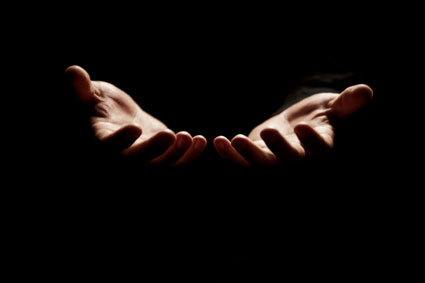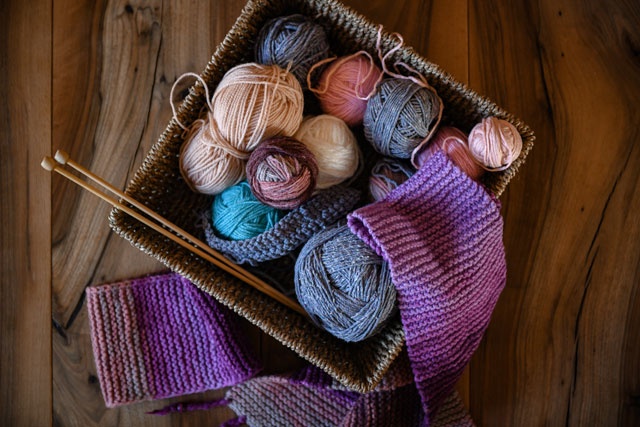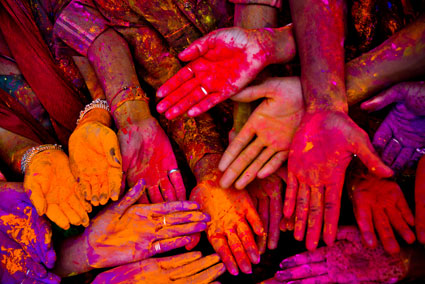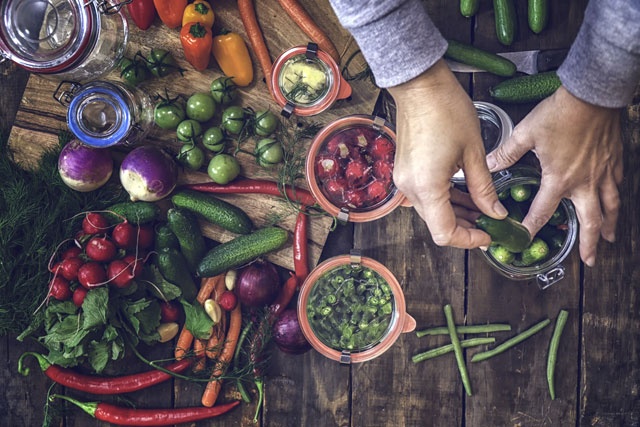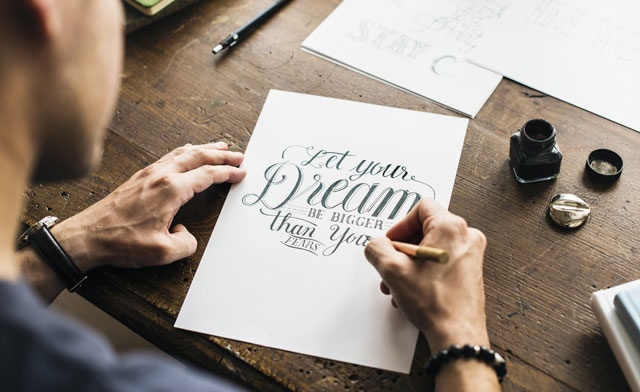Planning the menu and preparing ahead are wonderful, but at some point you actually have to serve the food--generally at the same time you are also trying to entertain guests and resolve a million questions.
You want to bring out the chicken salad sandwiches, but someone else is looking for the bathroom and a second person is asking you for organic agave nectar instead of honey for her tea. There is a critical mass of most parties--the level of guests that you can handle by yourself and the number at which you need help. Everyone's critical mass is different, and it also depends on how comfortable your guests are at the venue…they may be perfectly comfortable rummaging through your fridge to find the blackberry jam. But in general, one hostess can handle ten guests. Beyond that, it's a good idea to recruit help: teenagers, your spouse, your mother or mother-in-law, your helpful neighbor, etc. At a large-scale or formal event, you may need to hire professional servers to keep things moving so that you can handle the myriad other details.
Serving food and tea
A great feature of a tea party is that you can put most of the items out on the buffet or on individual tables before your guests arrive. Tea breads, cakes, cookies and scones can handle the wait.
Don't set out cold foods like mayonnaise-based sandwiches and salads until your guests arrive. If you are setting these items on a buffet table, consider keeping them chilled by setting the serving dish over a cold base (like a cold pack or ice cubes). This step isn't as necessary if people will all be eating at the same time, but if you anticipate some "grazing" over the course of an hour, or if the weather is warm, take care to keep your cold foods cold. Remove cold items within two hours of the time you set them out. For example, if it is 5 pm and you've had egg salad sandwiches on the table since your guests arrived at 3, the sandwiches need to be thrown away--and not put back in the refrigerator for later.
Three basic types of service include setting all the food on a buffet for guests to select, setting food at each table for guests at that table to share (family style), or individually plating and serving each guest. Individual service is the most personalized and formal type of service, but it is less frequently used for tea parties.
Buffet service is by far the easiest method of serving food, and it is easier for a single hostess to handle alone. However, it does tend to create lines as guests consider their food options. For a small party, this can result in a short backlog of people. For a large party, you may see a half-hour queue for a chicken sandwich. To solve this problem, make all your buffet lines double-sided so two rows of guests can file through at once. Set up multiple buffet lines with the same items and keep the beverage area on a table separate from the food.
Setting the food on each table prevents the issue of long buffet lines. It encourages guests to talk, since they have to at least ask others to "pass the butter." It does require a bit more work for the hostess, since you have to provide duplicates of everything (food, platters, serving utensils) on each table, but it's only slightly more effort than setting up multiple buffet lines, and it takes up much less space.
Keeping the party going
Once your guests have arrived and greeted one another, they will require some guidance. If necessary, let them know how you expect the party to go--for example, some people require a little prodding to start eating. You may have to guide people to find a seat, or announce that someone will say a blessing before they can start eating. If you have a program (for example, if you have a speaker or if there will be music), you will need to encourage people to get their food so that they can enjoy the next part of the program.
Once the eating begins, you and your helpers, if you have any, will shift to keeping an eye on the amount of food and beverages. You may need to brew more tea, bring more sandwiches out of the refrigerator, set more cookies on the table or refill milk containers.
If you have a buffet area, try to keep it as clean as possible. Remove empty platters and trash, and sweep crumbs away. If you are using real china, someone will need to pick up the plates and move them into the kitchen. In a small gathering of adult friends, your guests will probably do this themselves.
Tea Etiquette
At some point in the late 1980s, the word etiquette took on a negative connotation of a bunch of rules invented solely for the purpose of making the group of people who knew and followed them feel better about themselves than those who did not. After that time, etiquette became associated with stuffy, boring events held by the sort of people who would judge others based on their decision to wear white trousers before Memorial Day. On the contrary, the original purpose of etiquette was a focus on consideration for other people's feelings and comfort.
For example, one should not blow one's nose at the dinner table because the other people at the table are trying to eat, and they don't want to have to think about the contents of your nose at that time. The subject of etiquette can take up an entire book--in fact, several books, as there are a variety of conflicting opinions about what is "proper." In this section, we will discuss etiquette as it applies to tea parties, always remembering that these guidelines are intended to make other people's experience more comfortable, not so that one person can judge another based on their failure to follow the rules.
Tea party etiquette
Because the tea party reached its peak popularity during Victorian times, when social etiquette was very strongly reinforced, modern-day tea parties are a great opportunity to practice polite customs that are often ignored in our hurried modern-day lives. It is also unrealistic to expect that all your guests will know these rather extensive rules. If you are hosting small children, a tea party is a great opportunity to educate them about manners. If you are hosting adults, you can provide gentle verbal reminders about the rules that really matter to you, like responding to invitations, but you can't expect everyone to remember to fold their napkin and set it to the left side of the plate whenever they stand up from the table.
Invitations
Your invitations should provide any information the guests will need to prepare for your event. For example, if you are hosting a garden tea and would like your guests to wear Sunday best attire, you need to put that specifically on the invitation. You wouldn't want to be the one person who showed up in jeans and a t-shirt when everyone else was wearing a nice dress, so let people know what to wear. If the event will be outdoors, let people know so that they can bring sunglasses, a hat, or wear sunscreen. If you want guests to bring an item to share, give them an idea of what sort of dish would be appropriate.
Responses
Tell guests exactly how to respond (by phone, email, etc.) and provide a specific deadline for responses. Many people forget to respond, so for a small party, you may have to track down each of your invited guests. This is not practical with a larger party. If you ever have the experience of inviting 150 people to an event and only receiving a response from 75 of those people, you will never ignore another person's response card again in your life.
Setting the table
Luckily, tea service involves very simple table settings. Generally, your guests will only need a knife, fork, spoon and teaspoon. Place utensils, in order of use, from the outside in. The folded napkin is the first item on the left side, then the fork, the plate, the knife and the spoon. The blade of the knife should always point toward the plate. If there is a separate bread plate, that goes on the upper left side (above the fork). If used, the bread knife is set on the bread plate, with the handle pointing diagonally down toward the regular knife.
Serving utensils
Provide serving utensils for butter, clotted cream, jams, jellies, sugar, and anything else people will have to retrieve from a common source. The serving utensil should be used to dab a small amount of the item onto the plate: for example, guests would use the communal jelly spoon to dab a small amount of jam onto their plate, then they would use their individual knife to spread it around. No one should use the shared utensil to spread a topping, because that would get crumbs on the utensil everyone else has to use. Likewise, they should not use one utensil in different items--for example, "double-dipping" a spoon in both clotted cream and blackberry jam.
The curate stand
A curate stand is a three-tiered serving stand that saves space on your table. Place scones on the top level, savories and sandwiches in the middle, and sweets on the bottom. Your guests can move through the layers from top to bottom, and you can remove plates as needed.
The tea
If you are using china plates for your tea service (instead of paper or Styrofoam cups), then provide both cup and saucer. A teacup is smaller and lighter than a coffee mug, with a small handle at the side. The saucer provides a handy place to rest your cup between sips so that tea doesn't drip onto the nice tablecloth below.
Holding the cup
Hold the cup by the handle, not by the bowl of the cup itself. Loop the index finger through the handle and put your thumb on the opposite side. Place your pinkie at the bottom of the handle to balance the cup. There is oh, so much controversy about whether or not to stick one's pinkie out when drinking tea. Originally, extending the pinkie was intended as a way to balance the teacup, rather like a cat uses its tail for balance. However, some etiquette experts, like Emily Post, disapprove of the "pinkies up" approach. When attending a party, if you are uncertain what to do with your pinkie, watch your hostess. If you are the hostess, then decide whether you wish to keep your pinkie conservatively down or brashly lifted. The choice is yours.
The saucer
If you are seated at a table, the saucer should stay on the table at all times. If you are on a sofa, or chair without a table, keep the saucer in your lap. You should only hold the saucer in your hand if you are standing up. After stirring your tea, the spoon will have some tea residue on it, so you do not want to set it down on the table, where it can easily stain the tablecloth. Instead, rest the spoon on the saucer.
Stirring the tea
If you add milk or sugar to your tea, use the spoon to stir it in, but take care not to clink your spoon on the sides of the cup. Gently fold the liquid with the spoon, avoiding the edges of the cup. You do this so that you can avoid making annoying clinking noises and also to keep from chipping the hostesses' tea set.
Believe it or not, there is actually some controversy over when to pour in the milk: into the empty cup before you add the tea, or into the full cup after the tea. Once upon a time, bone china cups were made from a very fragile paste that would crack if you poured hot liquid into a cold cup. To prevent cracking, people would add milk first, then the tea--the hot liquid would instantly cool, and the china was safe. China manufacturers solved this problem several hundred years ago, so now you can safely pour the milk in after the tea, which is actually a beautiful thing to do, because you can watch the milk form a cloud-like creation inside the cup before it dissipates and alters the color of the tea.
Likewise, add sugar and lemon after pouring the tea.
Always remove the spoon before you start drinking the tea, whether cold or hot. Put the spoon on the saucer. If there is no saucer, put the spoon on a plate.
To slice or wedge
First of all, what is the difference between a slice and a wedge? A lemon slice is a circular cut of lemon that shows off the beautiful sections in the fruit's interior. When cutting lemons for slices, start at the pointy ends of the fruit and cut paper-thin slices across the short side. Slices are completely round.
Wedges are made by cutting the fruit in half lengthwise, then taking each half and cutting it into quarters across then length of the fruit. Wedges are semi-circular, and they have a wide peel.
Lemon slices are meant to be added, whole, to the tea, so that they float on its surface. Lemon wedges are meant to be squeezed so that just the juice flavors the tea. If you serve lemon wedges for squeezing, it is a nice touch to put them inside cheesecloth sleeves so that the seeds do not get into your guests' tea.
Drinking the tea
The guiding principle of tea drinking is: take your time. If it is too hot to drink as soon as you pour it, wait for the tea to cool or add milk until you can drink it. Be careful not to slurp, and don't blow on the tea to cool it down. Don't use tea to wash down food. Instead, chew and thoroughly swallow the food, and then sip the tea.




